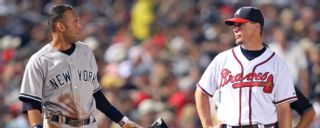|
Editor's note: This story initially ran on May 30, 2018 Draft history is fascinating, and maybe the first thing you learn when looking through past drafts is not just how few players make the majors but also how few end up contributing much value beyond replacement level even if they do make it. Drafting a future star is rare -- even in the first round. Drafting a solid contributor is rare -- even in the first round. Drafting two solid contributors in one draft is rare. It's a roll of the dice, yet the future success of your favorite team depends to a large degree on its ability to draft well. Let's take a snapshot of all 30 teams, looking at their best first-round pick since the draft began in 1965, a late-round gem (10th round or later) and one who got away (a player they drafted but failed to sign). Prior to 1987, the draft included a January phase, but this piece will focus on picks in the regular June phase as it now exists. All WAR numbers are from Baseball-Reference and the invaluable research assistant that was the highly recommended "Baseball America's Ultimate Draft Book," which includes recaps and tidbits from every draft plus all the year-by-year picks. AL East 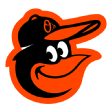 Baltimore Orioles Baltimore Orioles
Best first-round pick: Mike Mussina (20th pick, 1990). The Orioles drafted Mussina out of high school (he was a first-round talent but slipped to the 11th round with his Stanford commitment). They took him again three years later. In 10 seasons with the Orioles, Mussina won 147 games, received Cy Young votes in seven seasons and averaged 4.8 WAR per season. Late-round gem: Al Bumbry (11th round, 1968). The only player from Virginia State to ever make the majors, Bumbry's signing bonus was $0. He was Rookie of the Year in 1973 and a solid contributor for 12 seasons. The one who got away: Dave Winfield (40th round, 1969). The Orioles took a flyer on the two-sport star from St. Paul Central High School, but he went on to play baseball and basketball at the University of Minnesota, later becoming a first-round pick of the Padres. 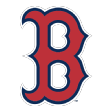 Boston Red Sox Boston Red Sox
Best first-round pick: Roger Clemens (19th pick, 1983). Somehow 10 pitchers in what proved to be a weak first round were selected ahead of Clemens, in part because Texas coach Cliff Gustafson used Clemens as his No. 3 starter (though Clemens won the title game of the College World Series). Two teams -- the Mariners and Expos -- had two picks before Boston selected Clemens. Late-round gem: Bill Lee (22nd round, 1968). Lee was drafted out of USC, won 94 games for the Red Sox (and 119 in his career) as a soft-tossing lefty and became known as the "Spaceman" for his eccentric behavior. The one who got away: Mark Teixeira (ninth round, 1998). The Maryland high schooler elected to attend Georgia Tech, turning down a reported $1.5 million bonus. He later spurned the Red Sox a second time when he signed with the Yankees instead of Boston as a free agent.  New York Yankees New York Yankees
Best first-round pick: Derek Jeter (sixth pick, 1992). The Astros had the first pick and debated between Jeter and Cal State Fullerton slugger Phil Nevin. With a $700,000 budget, the Astros were scared off by Jeter's reported $1 million bonus demand, though area scout Hal Newhouser insisted Jeter was asking for only $750,000. The Astros took Nevin -- and Newhouser resigned. Jeter fell to sixth and signed for $700,000. Late-round gem: Andy Pettitte (22nd round, 1990) and Jorge Posada (24th, 1990). The Yankees hit the lottery with two draft-and-follows in the same year. Those two ended up producing the third- and fourth-most WAR in the draft that year and helped the Yankees to five World Series championships. The one who got away: Fred Lynn (third round, 1970). The California high schooler instead joined college baseball powerhouse USC and was re-drafted by the Red Sox in the second round in 1973. That probably worked out best for Lynn: He hit .347 in his career at Fenway Park and .237 at Yankee Stadium.  Tampa Bay Rays Tampa Bay Rays
Best first-round pick: Evan Longoria (third pick, 2006). The Royals took Luke Hochevar, and the Rockies took Greg Reynolds, leaving Longoria for Tampa Bay. He earned 50.0 WAR with the Rays and helped them to four postseason appearances. Late-round gem: Kevin Kiermaier (31st round, 2010). None of Tampa's three first-round picks reached the majors, but the team scored with the junior college outfielder who became a Gold Glove center fielder. The one who got away: Andrew Miller (third round, 2003). Miller was the highest unsigned pick from the 2003 draft, electing instead to attend North Carolina.  Toronto Blue Jays Toronto Blue Jays
Best first-round pick: Roy Halladay (17th pick, 1995). The high school pitcher from Colorado ended up leading all 1995 first-rounders in career WAR (with only second-round pick Carlos Beltran topping him among players). Late-round gem: Jeff Kent (20th round, 1989). Kent hit .193 as a sophomore at Cal-Berkeley and left the team his junior season after clashing with the coach. The Blue Jays traded him for David Cone, but he went on to drive in more than 1,500 runs and become the all-time leader in home runs by a second baseman. The one who got away: Kris Bryant (18th round, 2010). In the same draft, the Blue Jays snagged Noah Syndergaard with the 38th pick -- only to trade him as a minor leaguer. AL Central  Chicago White Sox Chicago White Sox
Best first-round pick: Frank Thomas (seventh pick, 1989). Undrafted out of high school, Thomas played some tight end at Auburn as a freshman, but after hitting 22 home runs on the baseball diamond his first season, he gave up football. Late-round gem: Mark Buehrle (38th round, 1998). The White Sox drafted him after his freshman season at a Missouri junior college and signed him 11 months later as a draft-and-follow. He won 214 games in his career, 161 with the White Sox. The one who got away: Willie McGee (seventh round, 1976). McGee attended a junior college and was re-drafted the following year by the Yankees (who traded him as a minor leaguer to the Cardinals).  Cleveland Indians Cleveland Indians
Best first-round pick: Manny Ramirez (13th pick, 1991). CC Sabathia isn't too far behind Ramirez in career WAR, so you could go with him as well. Maybe Francisco Lindor will pass both. Late-round gem: Jim Thome (13th round, 1991). In the same draft, the Indians snagged Brian Giles in the 17th round. That's one Hall of Famer and 124.0 combined WAR, or a good decade for some teams. The one who got away: Tim Lincecum (42nd round, 2005). Lincecum was a draft-eligible sophomore at the University of Washington, but the Indians failed to meet his bonus demands even as he had a big summer in the Cape Cod League. He went 10th overall to the Giants the next year.  Detroit Tigers Detroit Tigers
Best first-round pick: Justin Verlander (second pick, 2004). The Padres selected Matt Bush with the first pick over Verlander in one of the all-time draft gaffes. Late-round gem: John Smoltz (22nd round, 1985). The local product had a first-round fastball but was expected to enroll at Michigan State. The Tigers signed him ... and traded him to the Braves in 1987. Hey, at least Doyle Alexander helped them win the division that year. The one who got away: Ozzie Smith (seventh round, 1976). The Tigers had one of the great drafts of all time, taking Hall of Famers Alan Trammell in the second round and Jack Morris in the fifth round, plus Dan Petry and Steve Kemp. It could have been three Hall of Famers.  Kansas City Royals Kansas City Royals
Best first-round pick: Kevin Appier (ninth pick, 1987). Zack Greinke has more career WAR, but Appier earned nearly 20 more WAR in a Royals uniform. On the other hand, Greinke was traded for Lorenzo Cain and Alcides Escobar, who helped the Royals win a World Series. Late-round gem: Bret Saberhagen (19th round, 1982). Saberhagen missed most of his senior season with a sore arm. Three years later, he pitched a shutout to win Game 7 of the World Series at age 21. He topped all 1982 draftees (of those who signed) with 59.2 WAR. The one who got away: Will Clark (fourth round, 1982). For whatever reason, 1982 ended up as the draft with the most unsigned future stars: Clark, Barry Bonds, Randy Johnson, Rafael Palmeiro, Barry Larkin, B.J. Surhoff and Bobby Witt were all premium high school talents but elected to attend college, setting up the 1985 draft as one of the strongest ever.  Minnesota Twins Minnesota Twins
Best first-round pick: Joe Mauer (first pick, 2001). The Twins were widely criticized at the time for taking the local high school catcher over USC right-hander Mark Prior, but Mauer proved to be the right choice. Late-round gem: Kent Hrbek (17th round, 1978). Another local kid from Kennedy High School in Bloomington, Hrbek spent his entire career with the Twins, mashing 293 home runs and winning two World Series. The one who got away: Steve Garvey (third round, 1966). The Tampa high school product attended Michigan State, and the Dodgers drafted him in 1968. AL West  Houston Astros Houston Astros
Best first-round pick: Craig Biggio (22nd pick, 1987). Biggio, drafted out of Seton Hall, was the second catcher selected in the 1987 draft. Two picks earlier, the Tigers selected Miami high schooler Bill Henderson, who set national records for career hits and RBIs. He never reached the majors. Late-round gem: Kenny Lofton (17th round, 1988). Lofton played in the Final Four for the Arizona basketball team but played only five games on the baseball team -- and received one at-bat. The Astros knew he played baseball in high school and took a flyer ... only to trade him for Eddie Taubensee in an ill-fated deal. Also: Roy Oswalt, a 23rd-round draft-and-follow in 1996. The one who got away: Jason Varitek (23rd round, 1990). Varitek attended Georgia Tech, didn't sign again when the Twins took him in the first round in 1993 and finally signed with the Mariners as a repeat first-round pick in 1994. 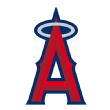 Los Angeles Angels Los Angeles Angels
Best first-round pick: Mike Trout (25th pick, 2009). The best player ever drafted out of Millville (New Jersey) Senior High School. Late-round gem: Howie Kendrick (10th round, 2002). The Florida junior college pick hit .292 in nine seasons with the Angels. The one who got away: Buster Posey (50th round, 2005). Posey was a star pitcher in high school, played shortstop as a freshman at Florida State and then converted to catcher, and the Giants took him fifth overall in 2008.  Oakland Athletics Oakland Athletics
Best first-round pick: Reggie Jackson (second pick, 1966). The top two players on everyone's draft board were high school catcher Steve Chilcott from Lancaster, California, and Arizona State outfielder Jackson. The Mets took Chilcott and the then-Kansas City A's took Jackson. Late-round gem: Gene Tenace (20th round, 1965). In the first draft, the A's had their best draft, taking Rick Monday (who was later traded for Ken Holtzman) with the first overall pick, followed by Sal Bando and Tenace, three key players as the A's won three straight World Series from 1972 through '74. The one who got away: Tim Hudson (35th round, 1994). The A's made up for not signing Hudson by redrafting him three years later out of Auburn. 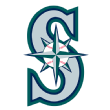 Seattle Mariners Seattle Mariners
Best first-round pick: Ken Griffey Jr. (first pick, 1987). Alex Rodriguez also worked out well as a first overall pick. Al Chambers did not. Late-round gem: Raul Ibanez (36th round, 1992). Ibanez went on to hit 305 home runs and drive in 1,200 runs (though his best years with Seattle came after he rejoined them as a free agent). The one who got away: Tony Phillips (16th round, 1977). A late-blooming utility player, Phillips was an on-base machine in the 1990s who ended up with more than 50 career WAR.  Texas Rangers Texas Rangers
Best first-round pick: Mark Teixeira (fifth pick, 2001). It's him or Kevin Brown, two Georgia Tech products. Both earned more career WAR after leaving the Rangers, but at least Teixeira returned Elvis Andrus in trade. Late-round gem: Kenny Rogers (39th round, 1982). He was a 5-foot-9, 140-pound high school right fielder when Rangers scout Joe Marchese noticed the kid had a strong arm and convinced the Rangers to draft him as a pitcher. He came up as a reliever, moved to the rotation after four years and won 219 games. The one who got away: Barry Zito (third round, 1998). Zito was a third-round JC pick who instead went to USC, and the A's drafted him in the first round a year later. NL East  Atlanta Braves Atlanta Braves
Best first-round pick: Chipper Jones (first pick, 1990). Todd Van Poppel was regarded as one of the best pitching prospects in the past 25 years that draft year, but his commitment to the University of Texas scared most teams, including the Braves. Their backup plan worked out pretty well. Late-round gem: Kevin Millwood (11th round, 1993). He had a 16-year career in the majors, winning 169 games and finishing third in the 1999 Cy Young vote. The one who got away: Randy Johnson (fourth round, 1982). Imagine a rotation with Greg Maddux, Tom Glavine, John Smoltz and the Big Unit.  Miami Marlins Miami Marlins
Best first-round pick: Josh Beckett (second pick, 1999). Beckett reached the majors two years after being drafted, and two years after that he clinched the 2003 World Series with a shutout in Game 6. Late-round gem: Josh Willingham (17th round, 2000). He hit over .400 as a sophomore and junior at Division II North Alabama and hit 195 home runs in the majors. The one who got away: Cliff Lee (eighth round, 1997). Lee was drafted by the Marlins out of high school and then by the Orioles out of JC before finally signing with the Expos in 2000.  New York Mets New York Mets
Best first-round pick: Dwight Gooden (fifth pick, 1982). David Wright earned slightly more WAR in a Mets uniform, but Gooden had one of the greatest pitching seasons of all time in 1985 and helped the Mets to the 1986 World Series title. Late-round gem: Nolan Ryan (12th round, 1965). It remains a mystery why Ryan fell so far in that first draft (and as this story from The Athletic explains, there's some confusion to when he was selected). Credit to Mets scout Red Murff, who signed Ryan and watched every game his senior season. One story says he had a blister early in the season, lost three games in a row and saw his velocity dip into the 80s as scouts from other teams lost interest. The one who got away: Roger Clemens (12th round, 1981). Undrafted out of high school, the Mets took Clemens out of San Jacinto JC, but he turned down a $30,000 offer and went to the University of Texas.  Philadelphia Phillies Philadelphia Phillies
Best first-round pick: Chase Utley (15th pick, 2000). Mike Schmidt was the greatest pick in Phillies history, but he was a second-round selection. Utley was the team's best player -- and one of the best in the majors -- during their run of five straight division titles from 2007 through 2011. Late-round gem: Ryne Sandberg (20th round, 1978). Other teams stayed away from the Spokane, Washington, three-sport star because he had committed to play football at Washington State and because the Major League Scouting Bureau had put a low grade on him. He played a few games with the Phillies in 1981, but they traded the future Hall of Famer to the Cubs for Ivan de Jesus. The one who got away: J.D. Drew (first round, 1997). The consensus best talent in the 1997 draft, the Phillies took Drew with the second pick but were unable to sign him after a contentious negotiation with Scott Boras. The Cardinals took him fifth overall in 1998, and though he never became a huge star, he had an underrated career with 44.9 WAR. 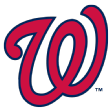 Washington Nationals Washington Nationals
Best first-round pick: Stephen Strasburg (first pick, 2009) or Bryce Harper (first, 2010). This is a tough one. Tim Wallach actually holds the slight edge over Ryan Zimmerman in career WAR with the franchise. Harper has about a 1 WAR edge over Strasburg, but Strasburg is signed through 2023, and Harper could leave after this season as a free agent. Late-round gem: Andre Dawson (11th round, 1975). The 1975 draft proved to be one of the weakest ever, but Dawson advanced from Florida A&M to the Expos in just over a year. The one who got away: Mark McGwire (eighth round, 1981). McGwire was a pitcher/first baseman in high school and actually pitched more his freshman year at USC, so who knows what would have happened if the Expos had signed him. NL Central  Chicago Cubs Chicago Cubs
Best first-round pick: Kris Bryant (second pick, 2013). Bryant is already fifth on the career WAR leaderboard for Cubs first-rounders. Rafael Palmeiro is the runaway leader, but he was traded to the Rangers early in his career for a package of flotsam. Late-round gem: Mark Grace (24th round, 1985). The Cubs got Palmeiro in the same draft they picked Grace, who was taken out of San Diego State. A few years later, they chose Grace over Palmeiro as their regular first baseman. The one who got away: Mark Langston (15th round, 1978). The left-hander from a California high school instead went to San Jose State, was taken by the Mariners in the second round in 1981 and went on to compile more than 50 WAR.  Cincinnati Reds Cincinnati Reds
Best first-round pick: Barry Larkin (fourth pick, 1985). The Reds actually drafted the future Hall of Famer out of Moeller High School in Cincinnati but had to wait to get him again after he went to Michigan. Late-round gem: Ken Griffey Sr. (29th round, 1969). The third-best player ever born in Donora, Pennsylvania. The one who got away: Jake Arrieta (31st round, 2004). They covered up their initial Larkin mistake, so let's go here. The Reds haven't drafted a pitcher who earned 10 WAR with the team since Rob Dibble in 1983.  Milwaukee Brewers Milwaukee Brewers
Best first-round pick: Robin Yount (third pick, 1973). The Brewers are the only team with five first-round picks to accumulate 40-plus career WAR: Yount, Paul Molitor, Gary Sheffield, Ryan Braun and Darrell Porter. Late-round gem: Jim Gantner (12th round, 1974). The Wisconsin native played all 17 seasons of his MLB career with the Brewers. The one who got away: Nomar Garciaparra (fifth round, 1991). The California high schooler instead attended Georgia Tech, and the Red Sox redrafted him in the first round in 1994.  Pittsburgh Pirates Pittsburgh Pirates
Best first-round pick: Barry Bonds (sixth pick, 1985). Who was drafted ahead of Bonds? The first four picks all had long MLB careers: B.J. Surhoff, Will Clark, Bobby Witt and Barry Larkin. The White Sox took high school catcher Kurt Brown one spot ahead of Bonds. He never reached the majors. Late-round gem: Dave Parker (14th round, 1970). A knee injury his senior year ended Parker's hopes of playing college football and forced him to miss baseball season. In a 1979 Sports Illustrated profile, Pirates execs at the time said Parker couldn't hit the ball in the air and had issues "wrangling" with coaches, and famed scout Howie Haak said the Reds, Parker's hometown team, "laughed at us when we took him." Parker was in the majors by 1973 and had a run as one of the best players in the game, including winning 1978 NL MVP honors. The one who got away: Lance Johnson (30th round, 1981). His nickname was "One Dog," which has to be one of the best nicknames ever. He once hit 21 triples in a season and recorded more than 30 career WAR. Will Trea Turner get to 30 WAR? The Pirates drafted him in 2011.  St. Louis Cardinals St. Louis Cardinals
Best first-round pick: Ted Simmons (10th pick, 1967). Simmons fell one vote short of election to the Hall of Fame in the most recent Modern Era committee vote. Late-round gem: Albert Pujols (13th round, 1999). They've struck gold with late-round first basemen: Keith Hernandez was a 42nd-round pick in 1971. (He dropped after leaving his high school team in a dispute with the coach but received first-round bonus money.) The one who got away: Paul Molitor (28th round, 1974). Max Scherzer, a 43rd-round pick in 2003, could someday join Molitor in Cooperstown. NL West  Arizona Diamondbacks Arizona Diamondbacks
Best first-round pick: Max Scherzer (11th pick, 2006). Good pick ... bad trade. Late-round gem: Mark Reynolds (16th round, 2004). Slim pickings here, but Reynolds is approaching 300 career home runs. The one who got away: Ian Kinsler (29th round, 2000, and 26th round, 2001). Somebody in the Arizona scouting department liked Kinsler. The Rangers made him a late-round gem as a 17th-round pick in 2003.  Colorado Rockies Colorado Rockies
Best first-round pick: Todd Helton (eighth pick, 1995). We have to give Helton the edge over Troy Tulowitzki (Nolan Arenado was a second-round choice). Late-round gem: Dexter Fowler (14th round, 2004). They missed out on signing 37th-round pick Todd Frazier in the same draft. The one who got away: Chris Sale (21st round, 2007). Career WAR from all the players the Rockies signed that year: minus-1.7.  Los Angeles Dodgers Los Angeles Dodgers
Best first-round pick: Clayton Kershaw (seventh pick, 2006). Baseball America ranked Kershaw the 34th-best high school prospect entering his senior season, but his stock exploded alongside his fastball and curveball. Still, five college pitchers were selected ahead of Kershaw; they've combined for just over 20 career WAR (most of that from Brandon Morrow and Andrew Miller), while Kershaw has already topped 60. Late-round gem: Mike Piazza (62nd round, 1988). The Dodgers have had a few late-round gems, including 17th-rounder Orel Hershiser, but Piazza is the king of late-round picks, especially given the circumstances of why he was drafted. The team's final pick in the 1988 draft was selected merely as a favor to Piazza's godfather, Tommy Lasorda. The one who got away: Tom Seaver (eighth round, 1965). The Dodgers have also had some who got away, including Chase Utley (as a second-round pick) and Paul Goldschmidt. Seaver's eventual entry into pro ball was one of the strangest in draft history. After the Dodgers drafted him, he returned to USC. Under the rules of the time, the Braves then re-drafted him in the January phase and agreed to a $40,000 bonus in late February. But the commissioner nullified the contract because USC's spring schedule had already begun. The NCAA then ruled Seaver ineligible because he had signed a pro contract. The solution: A special lottery for teams that agreed to pay Seaver a bonus of at least $50,000 (after Seaver's father threatened a lawsuit). The Mets, Phillies and Indians elected to participate. You know who won.  San Diego Padres San Diego Padres
Best first-round pick: Dave Winfield (fourth pick, 1973). The two-way star at the University of Minnesota gave up pitching and jumped straight to the majors. Late-round gem: Jake Peavy (15th round, 1999). He ended up with the second-most WAR of any player drafted in 1999, behind only Albert Pujols. The one who got away: Todd Helton (second round, 1992). He was a two-way talent on the diamond and a two-sport star. He went to Tennessee, spent two seasons as a backup quarterback behind Heath Shuler and Peyton Manning, and then focused on baseball.  San Francisco Giants San Francisco Giants
Best first-round pick: Buster Posey (fifth pick, 2008). Will Clark, Matt Williams and Madison Bumgarner were great picks, and Tim Lincecum won two Cy Young Awards in a brief run of dominance, but Posey has been the best catcher in the game since he debuted and the rock for three World Series champions. Late-round gem: Jack Clark (13th round, 1973). Most teams saw Clark as a pitcher, but after five games on the mound, the Giants left him in the outfield. He reached the majors before turning 20. The one who got away: Barry Bonds (second round, 1982). OK, they eventually got him as a free agent -- rumor is he had some good years with the Giants -- but the Giants failed to sign him out of high school over a difference of $5,000.
|


